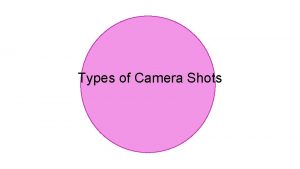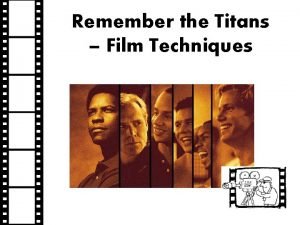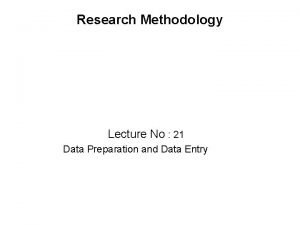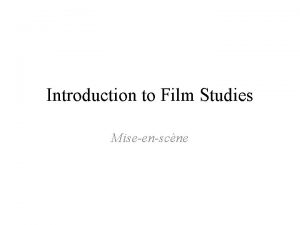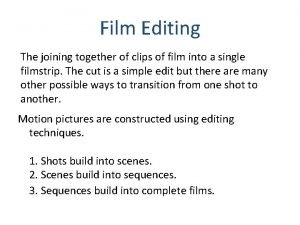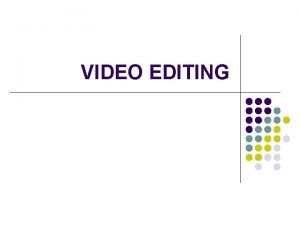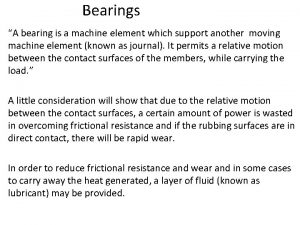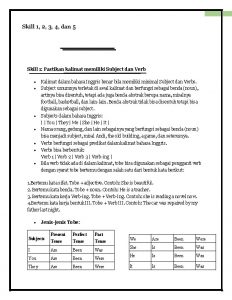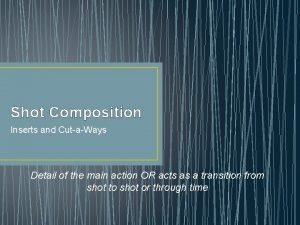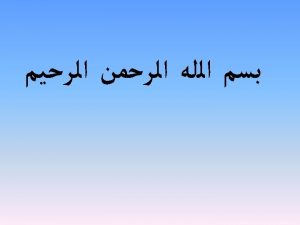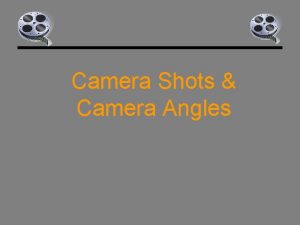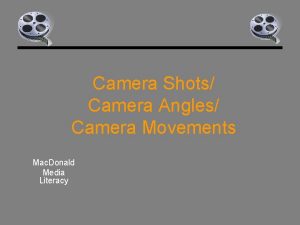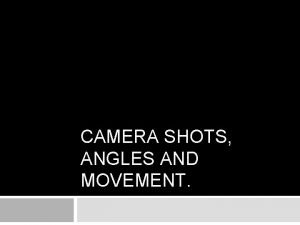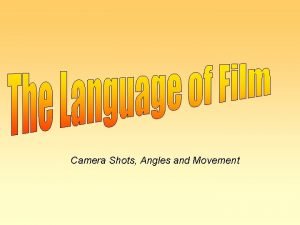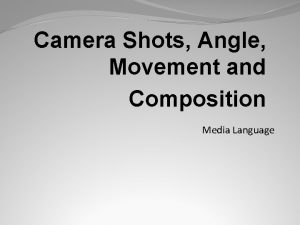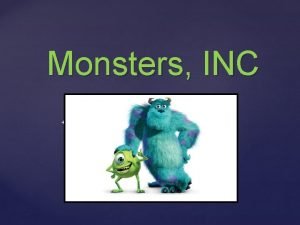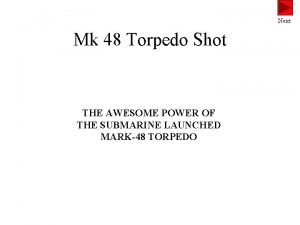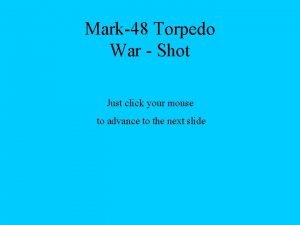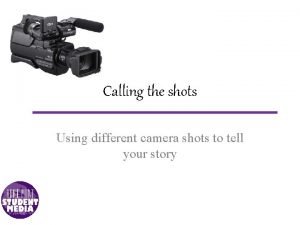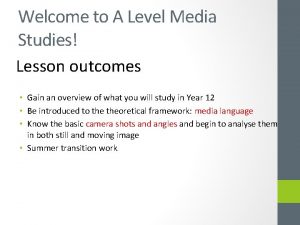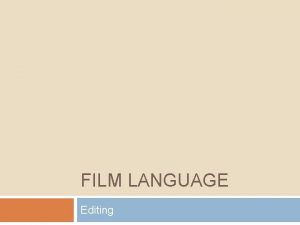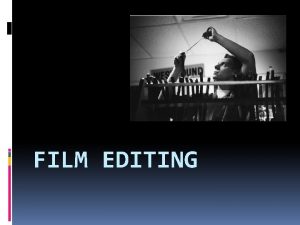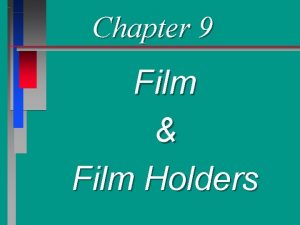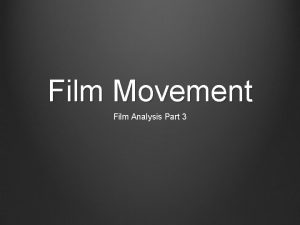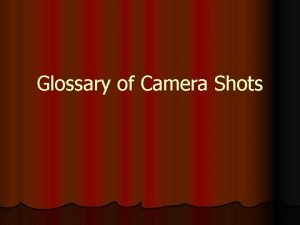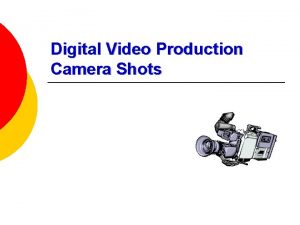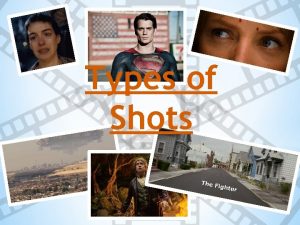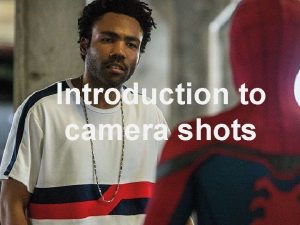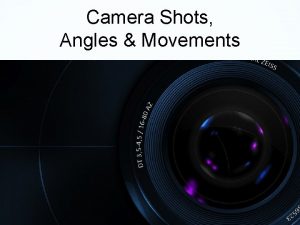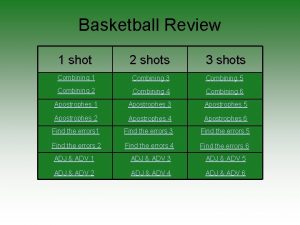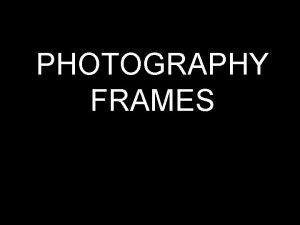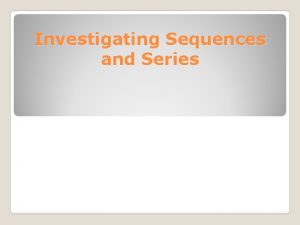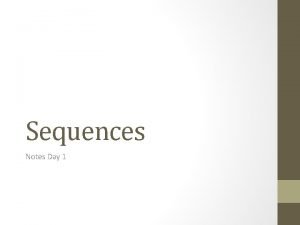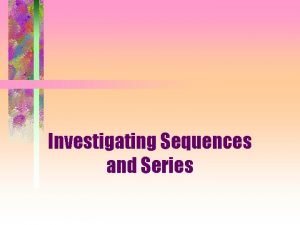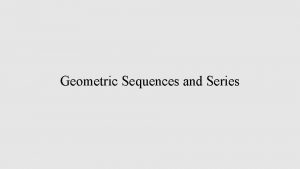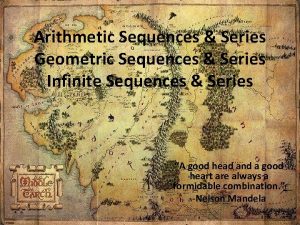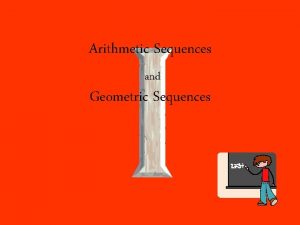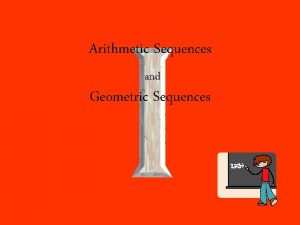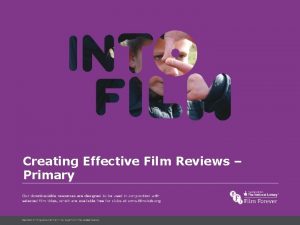Film Language Editing Editing Sequences the shots into




























- Slides: 28

Film Language Editing

Editing • Sequences the shots into something that makes sense for the audience, both in terms of events (action cuts to reaction) and spatial relationships. • Most common editing technique in use today is called ‘Continuity Editing’

Continuity Editing • • • Makes sense of the space Makes sense of actions and reactions Makes sense of the passage of time. Gives event rhythm Calls the audience’s attention to specific objects / characters / events in the film

Some Rules of Continuity Editing • All edits should be motivated • 1800 rule – Shot Reverse Shot • 300 rule. – Jump cut Match on Action

180 Degree Rule

Shot

Reverse Shot

Match on Action

Eye-Line Match

Cross-Cutting

Editing can be analysed in two ways: Speed Style

Speed

Editing challenge. Count the number of cuts in the following sequence:

‘Psycho’ In this sequence, note where and when the editing changes pace and to what effect.

Style

Editing Styles • • • Straight cut Fade out Dissolve Wipe Jump cut

Watch the following extracts and try to identify the styles of edit that are being used and to what effect.

Another style of editing is called…

Montage Editing • Allowing the audience to make meaning from the sequencing of images. • Also used to show a passing of long periods of time and progression of a character or relationship.

Graphic Match

Example 1



Example 2



Look for the graphic match in the following sequences.

Continuity Editing • • • Makes sense of the space Makes sense of actions and reactions Makes sense of the passage of time. Gives event rhythm Calls the audience’s attention to specific objects / characters / events in the film
 Camera shot types
Camera shot types Slidetodoc.com
Slidetodoc.com Field editing and central editing in research
Field editing and central editing in research Linear editing vs non linear editing
Linear editing vs non linear editing Continuity editing
Continuity editing This was joined by film editing
This was joined by film editing Continuity editing in film
Continuity editing in film Explain wedge film and squeeze film journal bearings
Explain wedge film and squeeze film journal bearings Developmental sequences in language acquisition
Developmental sequences in language acquisition Sarah rarely misses her basketball shots
Sarah rarely misses her basketball shots Shoot cutaway shots
Shoot cutaway shots Premade jello shots
Premade jello shots Bb shots in pap smear
Bb shots in pap smear Cutaway shot
Cutaway shot Citizen kane cinematography
Citizen kane cinematography Camera shots and angles quiz
Camera shots and angles quiz Extreme long shot (els)
Extreme long shot (els) Different angles in art
Different angles in art Camera shots angles and movements
Camera shots angles and movements Types of camera movement
Types of camera movement Media camera shots
Media camera shots Canted angle shot
Canted angle shot Full shot example
Full shot example Very long shot (vls)
Very long shot (vls) Mark 48 torpedo
Mark 48 torpedo Torpedo 48 shots
Torpedo 48 shots Noseroom shot
Noseroom shot Camera shots media studies
Camera shots media studies Mid shot camera angle
Mid shot camera angle
